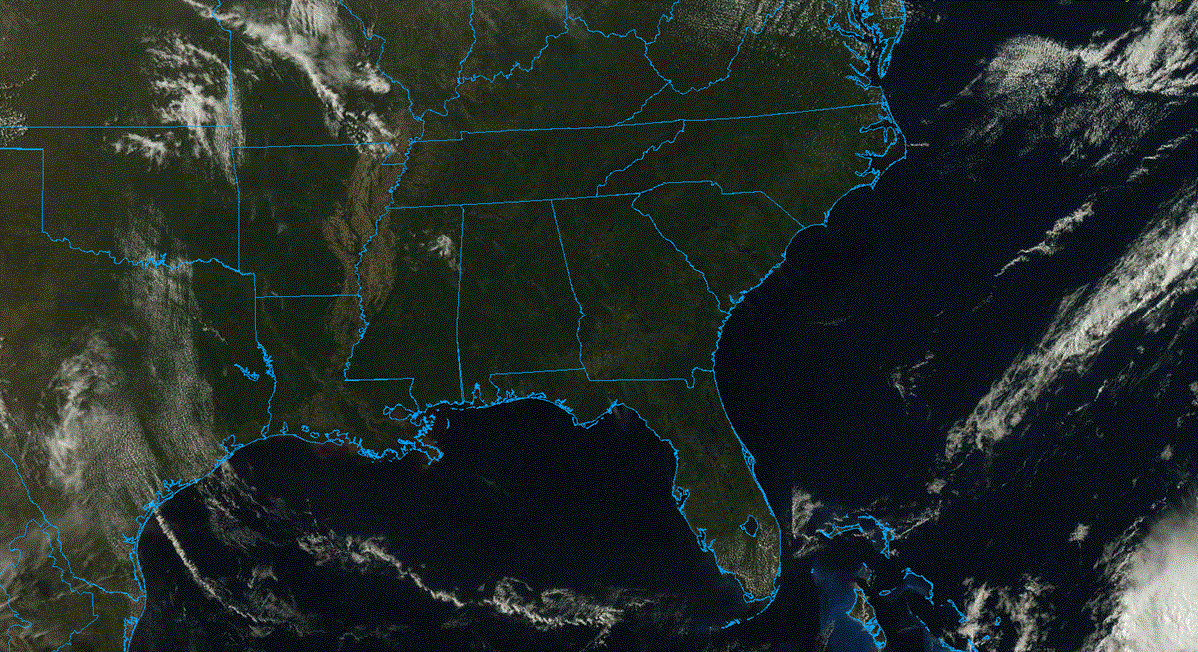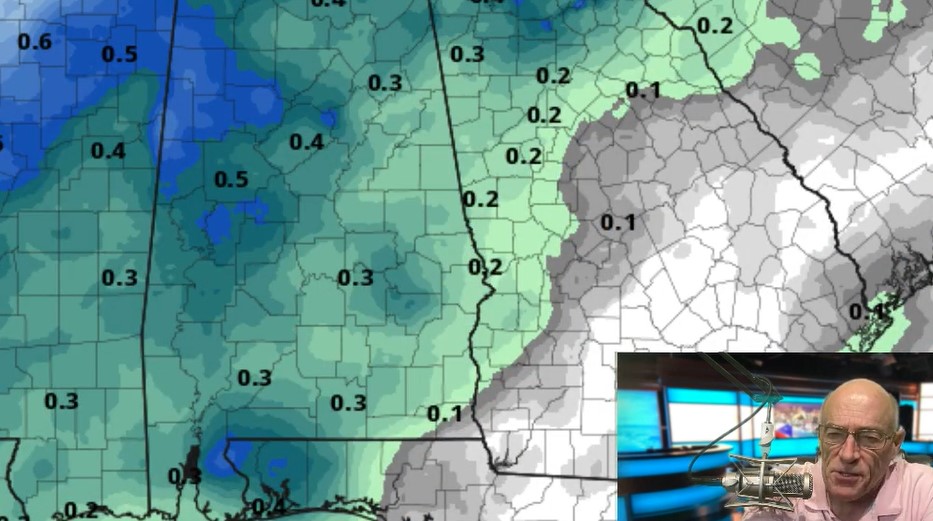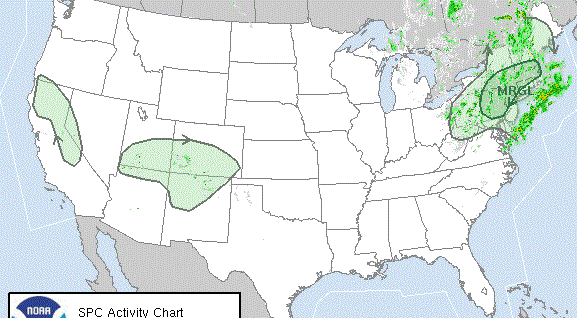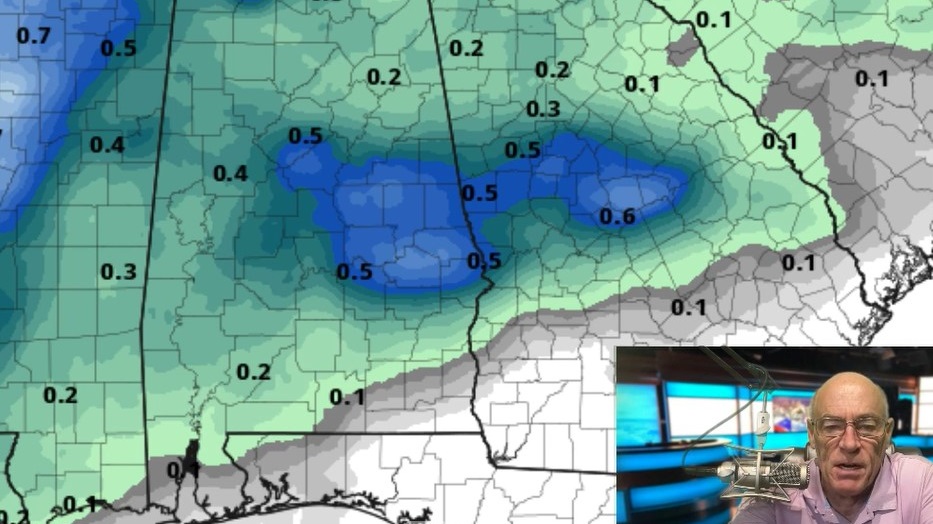James Spann: Mostly dry Tuesday for Alabama; scattered storms Wednesday-Friday
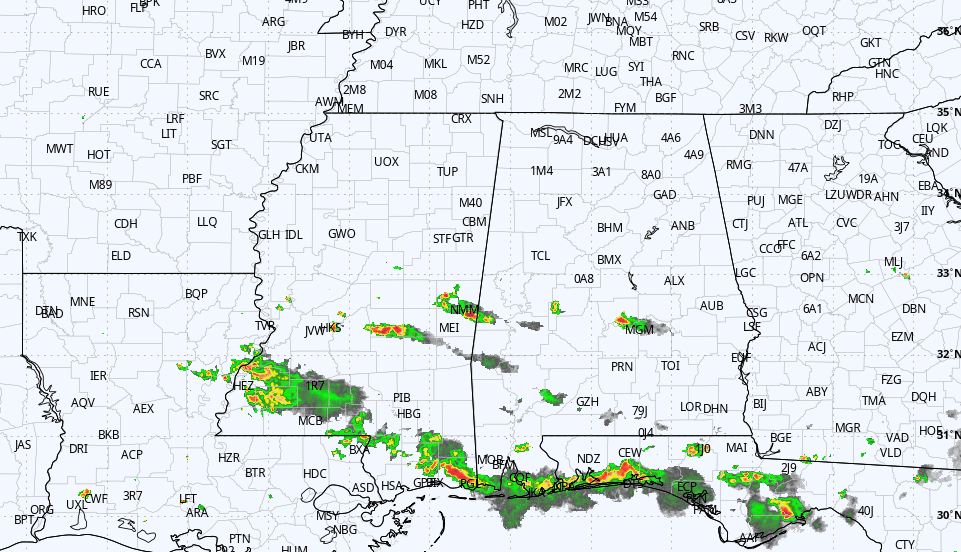
RADAR CHECK: A few small, isolated storms are on radar between Montgomery and Meridian, Mississippi, this afternoon, and we also note a band of showers and storms right on the Gulf Coast. The rest of the state is hot and dry, with temperatures in the 90s. The showers and storms will end this evening, and tonight will be mostly fair with a low in the 70s.
Tuesday will be hot and mostly dry, with a high between 95 and 100 degrees. The chance of any one spot seeing a cooling shower is 10% or less.
On Wednesday and Thursday, scattered showers and storms are possible statewide as the air becomes more unstable and moisture levels rise. The chance of any one community seeing rain is 40-50% both days. Otherwise, expect a mix of sun and clouds with a high in the mid 90s.
FRIDAY THROUGH THE WEEKEND: Pretty routine summer weather is the story for the end of the week and the weekend. Look for partly sunny, hot, humid days with a few random, scattered, mostly afternoon and evening showers and storms possible. Highs will be in the mid 90s in most places. The chance of your front yard seeing rain each day is 30-40%.
NEXT WEEK: Highs will be in the 90s, lows in the 70s, with partly sunny days and the risk of a pop-up afternoon shower or storm in scattered spots.
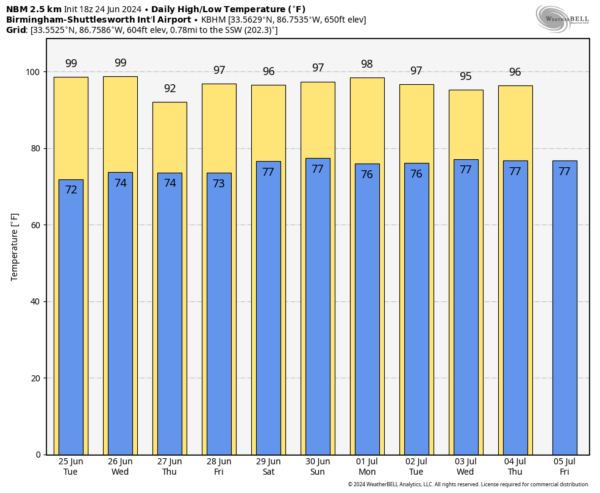 TROPICS: A westward-moving tropical wave a few hundred miles east-southeast of the Windward Islands is producing disorganized showers and thunderstorms. Environmental conditions appear conducive for slow development once the wave reaches the western Caribbean late this week. The chance of development over the next seven days is 20%. No tropical storms or hurricanes are expected near the central Gulf Coast (Gulf Shores to Panama City Beach) through July 4.
TROPICS: A westward-moving tropical wave a few hundred miles east-southeast of the Windward Islands is producing disorganized showers and thunderstorms. Environmental conditions appear conducive for slow development once the wave reaches the western Caribbean late this week. The chance of development over the next seven days is 20%. No tropical storms or hurricanes are expected near the central Gulf Coast (Gulf Shores to Panama City Beach) through July 4.
ON THIS DATE IN 1975: An Eastern Airlines Boeing 727 crashed at JFK airport in New York City, killing 113 of the 124 people on board the aircraft. Researcher Theodore Fujita studied the incident and discovered that a microburst caused the crash. His research led to improved air safety. The tower never experienced the microburst, which was held back by a sea-breeze front. The plane crashed 2,400 feet short of the runway.
For more weather news and information from James Spann and his team, visit AlabamaWx.
